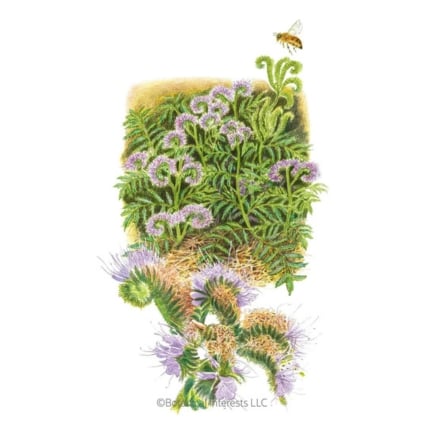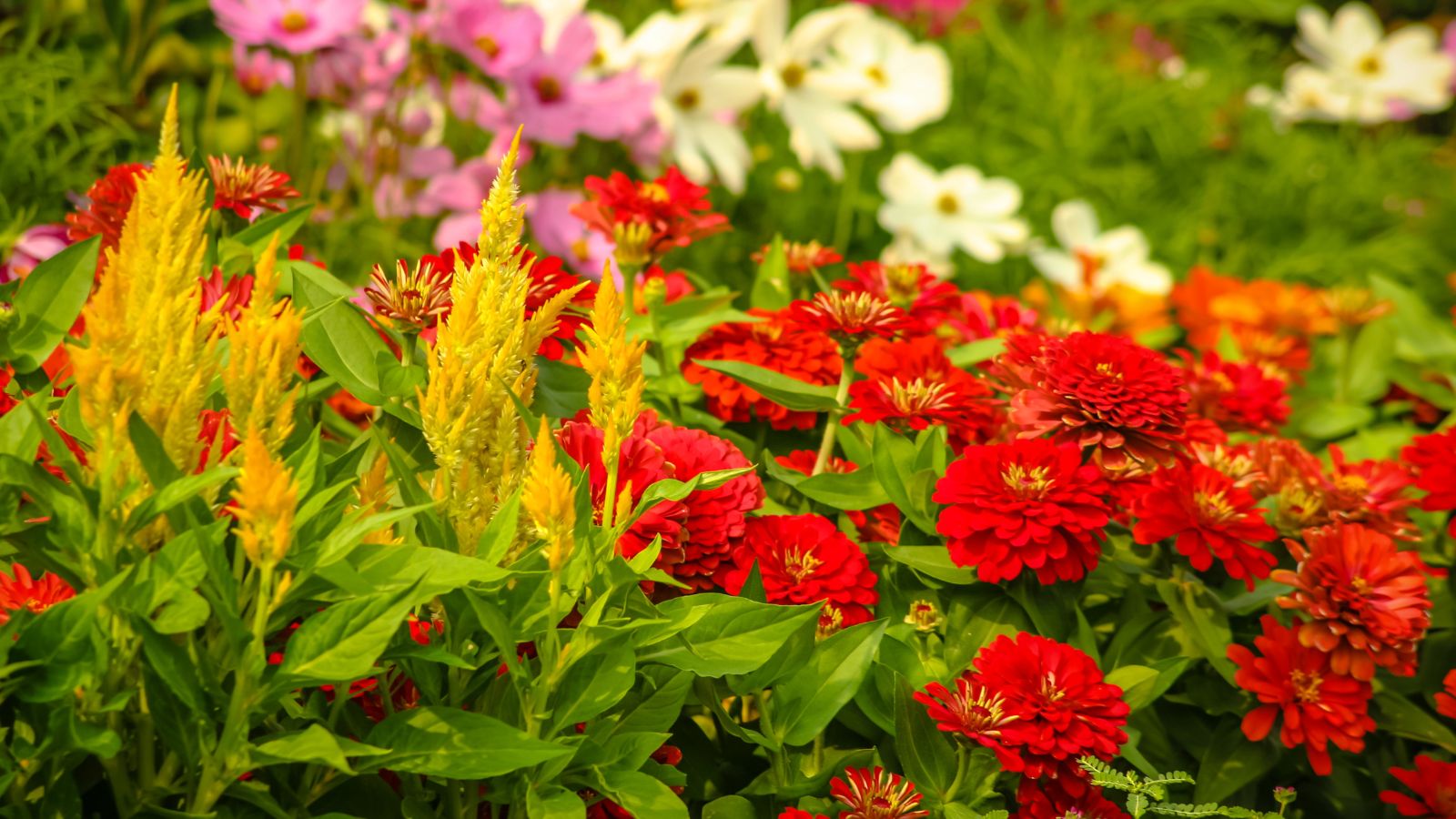PROTECT YOUR DNA WITH QUANTUM TECHNOLOGY
Orgo-Life the new way to the future Advertising by AdpathwayPesky summer weeds fill the garden with spiky leaves and fluffy seed heads. Some are quite beautiful, while others are alien and otherworldly. Though summer weeds may look interesting, they have harmful effects on the garden.
Many non-native weeds prevent wildflowers, vegetables, and herbs from thriving. They spread diseases like rust, leaf spot, and powdery mildew. Others foster pests like aphids and whiteflies.
If you have a large property or haven’t weeded in a while, then your summer weeds may present an overwhelming issue. Worry not, as these five tips will help you reduce the weeds in your garden without breaking your back.
CobraHead Original Weeder

CobraHead Original Weeder & Cultivator
Soil Builder Peas and Oats

Soil Builder Peas and Oats Cover Crop Seeds
Lacy Phacelia Cover Crop

Lacy Phacelia Cover Crop Seeds

5 Pro Tips
Rather than spraying weeds with herbicides, use these tricks. Herbicides tend to spread to nearby plants and can have harmful effects on your flowers or veggies. Try these tips instead.
Remove Young Weeds
 Gentle pulls stop weeds before they take over.
Gentle pulls stop weeds before they take over.Young weeds are the easiest to remove. They have small, tender roots that snap easily from the ground. Squish or pull them when they’re young, and you’ll prevent them from spreading further.
Over time, you’ll begin to notice which seedlings are weedy species in the garden. Watch for the clover shape of clovers, spoon-shaped dandelion leaves, or spiky thistle leaves. Some weeds have telltale signs, while others are hard to differentiate from your desired seedlings.
If you’re unsure, let the plants grow a bit until you can identify them. Then, use your hands or a weeding tool to remove them.
Pinch Flowers
 Snipping weed blooms stops them from taking over later.
Snipping weed blooms stops them from taking over later.By the time summer arrives, many spring weeds are growing as tall as you! They’ll be developing blooms and seed pods, meaning they’re ripe for spreading in your garden. If they have long taproots or they’re strongly rooted, you can limit their spread by preventing them from seeding.
Simply walk around the garden during the summer and pinch the weed flowers before they form seeds. Use your hands if the stems aren’t prickly, or use snips and pruners if they are. Protect your hands with gloves, if necessary.
Some weed flowers are edible! Dandelion flowers, for example, are tasty in smoothies, salads, and charcuterie boards. Verify you know what the specimens are before you harvest and eat them, as some plants have toxic lookalikes.
Pick Seed Heads
 Seed pods add charm but can quickly spread trouble.
Seed pods add charm but can quickly spread trouble.Seed heads appear after flowers form and fade. These unique structures may resemble fruits, pods, cones, and fluffy spheres, depending on the weed. It’s not too late if they’re present—you can limit their spread.
Start by pinching off the seed heads from every weed. Remove the weeds that are easy to remove, and pick the seed heads of those that are difficult to pull out. Put them in a bag and throw them away. You don’t want them sprouting in your garden!
An alternative way to dispose of them is with hot composting. If you can get the compost pile hot enough, the heat will kill the seeds and prevent them from sprouting.
Some seed heads are incredibly decorative. Teasel, pampas grass, and love-in-a-mist all have seed pods that are elegant in decorations and dried floral arrangements. Bring them inside for decoration, then dispose of them when they fade.
Add Mulch
 A thick mulch layer keeps unwanted plants from popping up.
A thick mulch layer keeps unwanted plants from popping up.Instead of pulling weedy species, snuff them out! Mulch is a great tool for weeding. Simply place a super thick layer of mulch, like compost, leaf mold, or wood chips. Add a layer five inches or thicker to prevent the summer weeds from breaking through.
Other inorganic mulches work well to kill unruly plants. Try solarization or occultation. Solarization uses clear tarps, while occultation uses opaque ones. Both weeding methods have their pros and cons.
Solarization uses hot temperatures to zap the weeds, which can also kill beneficial organisms in the top layers of the soil. Occultation takes two weeks to a month, and it tends to have a less harmful effect on soil organisms.
For both of these methods, you’ll lay out the tarp over the weedy site. Weigh down the edges with bricks, stones, or other heavy materials. Check the site after a month to see if the plants are still green or if they’re yellow and brown. Remove the tarp and add an organic mulch on the dead weeds, then plant your crops into the mulch.
Plant More Plants
 Dense planting keeps the soil cozy and weeds away.
Dense planting keeps the soil cozy and weeds away.Weedy species grow because there is bare, exposed soil for them to sprout. Covering the ground is the solution! After adding mulch, plant tons of wildflowers, veggies, and herbs to blanket the ground with desirable growth. The more plants you have, the fewer weeds will sprout.
The same is true for container and raised bed gardening. Cover any exposed areas with low-growing plants or tall, climbing vines. Some plants are perfect for open sites. Sow German chamomile, bee balm, or yarrow. These three are a few of the thousands of different species you can grow.
Choose native plants to help local pollinators, birds, and small mammals. Cover crops are great for covering empty beds when crops aren’t growing. Use them to build the soil in the off-season.
You may want some weeds to grow! Dandelions, mallows, and plantains all have herbal and edible uses. It’s possible to both cultivate them and prevent their spread. Simply harvest their flowers and seed heads before they spread further.
Key Takeaways
- A weed is a plant you’d prefer not to grow. It’s your garden, and you can choose what’s in it. Use these techniques to control any unruly species.
- Young seedlings pull easily from the ground, while mature specimens are hard to remove.
- A favorite weeding technique is thick mulching. A layer five inches or thicker is perfect for snuffing undesirable plant species.
- The more veggies, flowers, and herbs you have, the fewer weedy specimens will grow.


 2 days ago
10
2 days ago
10





















 English (US) ·
English (US) ·  French (CA) ·
French (CA) ·